People addicted to opioid narcotics (and other drugs of abuse) often have additional mental health issues that significantly complicate their recovery during addiction treatment. In many cases, the situation is worsened by recovering addicts’ relatively infrequent use of available psychiatric services. In a study published in November 2013 in the journal Drug and Alcohol Dependence, researchers from Johns Hopkins University assessed the usefulness of an approach called contingency management (CM) in increasing recovering opioid addicts’ willingness to participate in psychiatric treatment. The researchers found that appropriate use of contingency management can significantly boost program participants’ attendance for psychiatric services.
Opioid Addiction And Mental Illness
 Like other forms of drug and alcohol addiction, opioid addiction is officially classified as a form of mental illness by the American Psychiatric Association. This is true because continued, excessive use of addictive substances literally alters the function of the human brain, and thereby fosters a range of serious, dysfunctional changes in everyday behavior. In addition, opioid addictions (and other substance addictions) often appear at the same time as other forms of diagnosable mental illness such as depression, schizophrenia or anxiety disorders.
Like other forms of drug and alcohol addiction, opioid addiction is officially classified as a form of mental illness by the American Psychiatric Association. This is true because continued, excessive use of addictive substances literally alters the function of the human brain, and thereby fosters a range of serious, dysfunctional changes in everyday behavior. In addition, opioid addictions (and other substance addictions) often appear at the same time as other forms of diagnosable mental illness such as depression, schizophrenia or anxiety disorders.
Numerous factors help explain the overlap between addiction and these mental illnesses, including the ability of substance abuse/addiction to trigger the onset of additional illness and the ability of non-substance-based mental illnesses to increase the risks for involvement in substance use. Research also indicates that substance addiction and other forms of mental illness share several important common risk factors that increase their likelihood of appearing together.
Contingency Management Basics
Contingency management is a behavior modification technique that uses rewards (and, in some cases, punishments) to bring about desired results in a drug treatment program or other therapeutic setting. One common form of this approach, called voucher-based reinforcement or VBR, uses the distribution of vouchers for services or material goods to encourage treatment compliance.
Another form of CM, called prize incentives contingency management, motivates compliance by giving patients a chance to win cash with every significant step toward active treatment participation. Contingency management is used in programs that treat addiction to substances such as opioid narcotics, marijuana, amphetamine, methamphetamine, alcohol and nicotine. Some programs use the technique to encourage abstinence during the course of recovery. Others use it to encourage participation in the psychiatric programs that address other forms of mental illness in people involved in substance addiction treatment.
Addicts Willing To Remain In Drug Rehab With Contingency Management
In the study published in Drug and Alcohol Dependence, the Johns Hopkins University researchers used an assessment of 125 adults going through outpatient treatment for opioid dependence to gauge the effectiveness of contingency management in improving the willingness to receive psychiatric services during participation in an addiction recovery program. Half of these individuals received $25 vouchers for each week of full participation in a 12-week course of psychiatric treatment. The remaining adults had access to the same psychiatric treatment, but did not receive vouchers or any other form of reward for treatment attendance. The researchers measured each group’s level of attendance after each month of the program.
After reviewing their findings, the researchers concluded that, compared to an approach that doesn’t employ contingency management, use of voucher-based CM nearly doubles the level of psychiatric treatment attendance after one month of treatment. In addition, use of vouchers more than doubles the level of attendance after two months of treatment and after three months of treatment. People who receive vouchers for psychiatric services remain in opioid addiction treatment just as often as people who don’t receive vouchers. They also successfully avoid using opioid drugs with equal frequency.
Contingency Management’s Clear Benefits In Addiction Programs
The authors of the study published in Drug and Alcohol Dependence believe that the use of contingency management techniques provides clear benefits for encouraging the use of psychiatric services in opioid addiction programs. However, they note that their research only looked at psychiatric services delivered to patients in a purposeful, coordinated manner during the course of addiction treatment.
Services delivered in other ways may or may not receive the same attendance boost from the contingency management approach. The authors also note that the specific type of psychiatric treatment offered in any given program may have a considerable impact on the usefulness of CM. In addition, program managers may need to alter or modify their use of CM in order to meet the specific challenges faced by their patient clientele.
Read More About Drug Rehab Treatment And Contingency Management
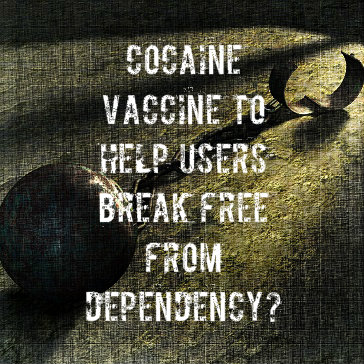 More than 22 million people in the United States are dealing with drug abuse, and the yearly healthcare dollars spent fighting this problem amount to more than 180 million. Cocaine abuse is one of the largest and most expensive problems under the larger umbrella of drug abuse, resulting in the most emergency room visits of any illicit drug.
More than 22 million people in the United States are dealing with drug abuse, and the yearly healthcare dollars spent fighting this problem amount to more than 180 million. Cocaine abuse is one of the largest and most expensive problems under the larger umbrella of drug abuse, resulting in the most emergency room visits of any illicit drug.
Unlike heroin addiction, which can often be treated successfully with a substitute drug called methadone, cocaine addiction has no such handy substitute available. But a small group of scientists have been working on another potential weapon for fighting cocaine abuse: a cocaine vaccine.
The idea for a drug abuse vaccine has been around for more than a quarter of a century. Currently, there are two major research teams actively engaged in developing a vaccine for clinical trials. These research groups are led by Kim Janda, Ph.D, of the Scripps Research Institute, and Thomas Kosten, M.D, of the Baylor College of Medicine. In 2010, Kosten’s team ran the first ever late-stage cocaine vaccine trial, with their vaccine TA-CD.
The Vaccine Principle
Vaccines have been in existence for hundreds of years, perhaps even more than 1,000 years. They operate in a very simple way: introducing a tiny amount of a disease (often in weakened or killed form) or something chemically similar to a disease into a person’s bloodstream so that the immune system is able to identify the invader and create antibodies. Once the human immune system learns to create antibodies for a particular disease, it can do so quickly again if the disease reappears.
However, a drug like cocaine is different from a disease-causing microbe. Cocaine in the bloodstream is much smaller than a microbe, and essentially invisible to the human immune system. As a result, recent approaches to the creation of a cocaine vaccine have involved attaching the vaccine to a virus. This helps the immune system learn to identify the substance and to destroy it.
Success Of Cocaine Vaccine And Questions
Both Kosten’s vaccine, TA-CD, and Janda’s vaccine, known as GNE, have had some measure of success in clinical trials. Janda and his research partner, Ronald Crystal of Weill Cornell, reported that GNE showed an impressive ability to destroy cocaine in the bloodstreams of monkeys. Kosten found similarly effective results from his human trial of TA-CD.
However, questions remain as to whether simply destroying cocaine in a person’s bloodstream is really an effective way of fighting drug abuse. Unlike measles or smallpox, two diseases almost completely eradicated in the first world because of vaccines, drug addiction is not simply a physical illness. Drug abuse can have serious physical effects, but addiction is a brain disease.
In the late-stage trial by the Baylor team, the results showed that the destruction of cocaine in addicts’ bloodstreams did not eliminate or reduce cravings for the drug. In some cases, the addicts in the trial took many times their usual dose of cocaine in an attempt to achieve the high that they were craving. For some subjects, this desperate search for a high was financially disastrous.
Addiction Prevention vs. Addiction Treatment
The purpose of a true vaccine is the prevention, rather than the treatment, of a serious disease. Although a cocaine vaccine may eventually be a successful tool for treating cocaine addiction, it may be even more effective when used as other vaccines are used: to prevent the initial development of a disease.
For individuals who are not addicted to cocaine, a successful drug vaccine could prevent them from ever experiencing any of the physical effects of the drug, including the chemical high that creates an addictive feedback loop in the human brain’s reward centers. This would prevent people from developing a dependency on the drug and suffering from cravings.
However, with so many people in the United States suffering from cocaine addiction, treatment remains a high priority for the scientists working on a vaccine. While an effective vaccine may never be a silver bullet that cures cocaine addiction on its own, it does have great potential as part of a larger treatment program. For example, a vaccine could essentially ensure addicts’ sobriety by destroying any cocaine that enters the system, even if they relapse.
Addiction is a complicated disease. For those of us who have never had an addiction, it can be easy to wonder why addicts can’t seem to make the decision to stop using and then do it. There are complicated brain chemical pathways that are affected by drugs and alcohol that lead to addiction and that make it almost impossible to stop using. Modern research has uncovered much of the role of the brain in addiction, but more recently has found that the immune system is also important.
The Immune System And The Brain
 Your body’s immune system is a complex network of different types of cells that are dedicated to protecting you from foreign invaders that cause sickness. Many of those immune cells live in the brain. These are called glial cells and they work alongside your neurons, or brain cells. The brain cells and immune cells that work together to regulate the responses of the immune system are called collectively, the neuroimmune system. This system keeps the brain healthy and mediates communication between the immune system and the central nervous system.
Your body’s immune system is a complex network of different types of cells that are dedicated to protecting you from foreign invaders that cause sickness. Many of those immune cells live in the brain. These are called glial cells and they work alongside your neurons, or brain cells. The brain cells and immune cells that work together to regulate the responses of the immune system are called collectively, the neuroimmune system. This system keeps the brain healthy and mediates communication between the immune system and the central nervous system.
Addiction’s Effects On The Neuroimmune System
Parts of the neuroimmune system are activated by various factors. Stress is one factor, which is why the feeling of being stressed can actually make you physically sick. Alcohol and drugs also trigger responses in the neuroimmune system. The responses can lead to disrupted decision making. This helps to explain why addicts make choices about using even when doing so is bad for them.
The response of the neuroimmune system to drugs and alcohol also changes a person’s affect and causes feelings of depression. Again, these feelings are characteristic of addiction. Researchers have even found that people with certain genetic variations in their neuroimmune system are more likely than others to succumb to addiction.
Innovative Addiction Treatments
With the increased understanding of how the immune system in the brain impacts addiction, researchers are able to come up with new treatments for this devastating disease. One such possible treatment may help addicts who use opioids like heroin and prescription painkillers. Studies have found that morphine, an opioid drug, binds to a certain immune system receptor that changes the dopamine pathway in the brain.
Dopamine is the brain chemical that is released when we feel something pleasurable. Drugs release huge floods of dopamine, which plays a role in developing addictions. The researchers hope that if they can block the immune receptor with a medication, they can stop the release of dopamine when someone uses an opioid. With no pleasurable sensation, there would be no addiction.
Methamphetamine is another seriously addictive drug that can be just as hard to quit as opioids. Research has shown how the drug negatively impacts the immune system of the user, so new studies have focused on targeting the immune system for treatment medications. A drug being developed for a variety of immune diseases may also help meth addicts. The drug reduces the immune response in the brain, which could help meth addicts feel better. One major hurdle to quitting is that the users feel awful when they give up meth. With the new medication, they may feel better, and less inclined to going back to using.
Other researchers have tackled cocaine addiction by working with the immune system. The new treatment is actually a vaccine. The researchers who developed it created a vaccine that would target cocaine and treat it as if it were an invader like a virus or bacterium. After being injected with the vaccine, mice in laboratory experiments showed an immune response that tackled any cocaine in the body. The result was that the mice did not get a high from cocaine. If the vaccine works in human trials, it could help addicts stop using. If they get no high, there will be no reason to use the drug.
The exciting field of addiction and the immune system is coming up with new information about the disease of addiction every day. With this new knowledge, researchers are able to create treatments that are medically- and evidence-based that may truly help people recover from addiction.
Choosing the right alcohol or drug rehab treatment strategy can be a challenge for someone still struggling with addiction. One of the most confusing aspects for many is simply figuring out which therapy does what. It’s critical information because it will guide you toward making the best decisions regarding treatment. This article will help you understand the treatment approach known as contingency management (CM) and how it helps addicts during recovery.
Contingency Management Basics
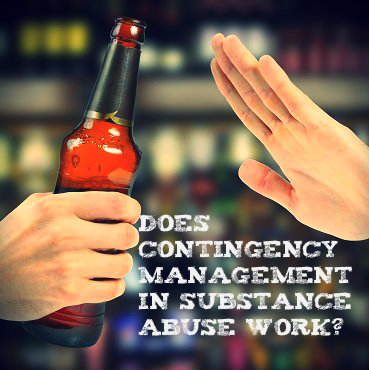 Contingency management is based on a simple principle: behavior that is rewarded is behavior more likely to be repeated in the future. It’s a principle we see all the time in everyday life. For example, a teen may earn an allowance for taking on extra chores, or a boss may award her employees with bonuses for excellent performance.
Contingency management is based on a simple principle: behavior that is rewarded is behavior more likely to be repeated in the future. It’s a principle we see all the time in everyday life. For example, a teen may earn an allowance for taking on extra chores, or a boss may award her employees with bonuses for excellent performance.
Although it can be used to treat alcohol abuse, CM is most commonly employed as to treat drug abuse and addiction. The therapy is also used by health professionals to help people overcome a range of challenges, including weight loss, exercise motivation, and cigarette smoking. Additionally, contingency management is sometimes utilized to increase the likelihood a patient will take medication as directed.
How Exactly Is CM Used In Substance Abuse Treatment?
During substance abuse treatment, CM reinforces positive, drug-free behavior with explicit, tangible rewards. One of the most common ways to use this reinforcement is to allow addicts to earn vouchers for goods and services, like movie tickets, retail goods, sports equipment, or electronics, after they’ve submitted a specified number of drug-free urine samples. In some programs, the reward has a fixed dollar amount, such as $25. Other treatment plan rewards may increase in value the longer the drug abuser stays clean. For example, a voucher may hold a starting value of $10 and increase by $2 for each negative sample the addict provides. The goal is to encourage substance abusers to remain abstinent during outpatient treatment.
Why CM Promotes Healthy Behaviors In Addicts
In addition to promoting abstinence, CM can be used to promote other healthy behaviors in addicts. Addiction therapists may reward patients for attending a certain number of 12-step meetings or showing positive behaviors during drug rehab treatment. One program offered housing and behavioral treatment to homeless cocaine addicts in exchange for staying drug-free [1].
Another form of contingency management involves medication for methadone patients. Recovering addicts may be permitted to take methadone doses home if they increase positive behaviors or cease negative ones. A patient, for instance, could earn the right to take home one dose a week after submitting a specific number of drug-negative urine tests.
Contingency management can be an appropriate treatment for many addicts, however, it’s considered especially helpful for those in high-risk groups. For example, this drug rehab treatment has been used to reduce dangerous injection-related behaviors, which increase the risk of acquiring HIV and other bloodborne diseases [2]. CM has also been used successfully to treat pregnant women with addiction. One review of numerous studies concluded that contingency management was more effective at keeping pregnant women in drug treatment than motivational interviewing, another addiction therapy [3].
Effectiveness Of Contingency Management For Drug Abuse
Contingency management has proved to be an effective treatment for substance abuse disorders. One review of 47 studies found that incorporating it into treatment improved drug abstinence rates during recovery. However, it also suggested that contingency management may be more effective for those with opiate or cocaine addiction than for those with multiple drug addictions [4].
Research also suggests CM is useful for keeping addicts in outpatient therapy. Typically, many substance abuse patients miss scheduled appointments; one estimate puts the number as high as 60%. However, in one study, researchers gave addicts who attended scheduled group therapy the chance to draw from a prize bowl, which contained vouchers for prizes ranging from $1 to DVD players. Recovering addicts were more likely to attend weekly sessions when reinforced with contingency management than when they were not [5]. Another study discovered that 84% of outpatient substance abusers receiving vouchers stayed in treatment over 8 weeks, while only 22% of non-voucher patients did so [6].
Contingency Management Drug Addiction Treatment Plan
Like many drug rehab treatment options, CM is not intended to be used as a sole therapy. It’s often used in conjunction with other addiction treatments. For example, cognitive-behavioral therapy (CBT) is one approach a therapist could pair with contingency management. During CBT, the alcoholic or drug addict will identify the negative behaviors and emotions that contribute to addiction.
The cost of contingency management can prevent some substance abuse clinics from using this therapy. Some evidence suggests that CM is not as effective when the value of the vouchers is too low [7]. The cost of vouchers attractive enough to change addiction behavior can quickly add up. In one study, addicts received vouchers worth more than $1,000 over the course of treatment [8].
Some experts have raised concerns that incentives, such as those that allow substance abusers the opportunity to draw a random prize from a bowl, increase the risk for pathological gambling. However, prize drawings in CM have not been shown to promote excessive gambling, according to the National Institute on Drug Abuse [9].
Critics Of Contingency Management For Drug Rehab Treatment
Contingency management is not without critics. Some opponents of this approach assert that contingency management amounts to bribing drug users to stay clean. Another concern of critics is that some addicts will deceive treatment professionals by providing clean urine samples that do not belong to them, thus collecting the incentive without meeting their own obligation to stay abstinent. Additionally, those against this approach argue that CM does not directly address underlying issues that contribute to substance abuse. However, it’s important to note that contingency management is often paired with other treatments developed to produce long-term behavioral changes.
Drug rehab treatment may be one of the most important decisions you’ll ever make. Speak with an addiction professional to learn if contingency management is the right choice for you.
References:
[1] http://www.sciencedirect.com/science/article/pii/S0376871600800083
[2] http://www.ncbi.nlm.nih.gov/pmc/articles/PMC2271179/
[3] http://www.ncbi.nlm.nih.gov/pubmed/17943878
[4] http://onlinelibrary.wiley.com/doi/10.1111/j.1360-0443.2006.01581.x/abstract
[5] http://www.ncbi.nlm.nih.gov/pmc/articles/PMC2606605/
[6] http://psycnet.apa.org/journals/ccp/68/2/250/
[7] http://www.ncbi.nlm.nih.gov/pubmed/16445548
[8] http://ajp.psychiatryonline.org/article.aspx?articleID=174754
[9] http://www.drugabuse.gov/publications/principles-drug-addiction-treatment-research-based-guide-third-edition/evidence-based-approaches-to-drug-addiction-treatment/behavioral-0
What Is Harm Reduction?
Harm reduction is a controversial technique used to help treat addicts, particularly drug addicts. The philosophy behind this method of treatment is to help an addict use safely, rather than forcing him to stop using. By aiding addicts, the caregivers reduce the potential for harm. Although using illegal drugs is always harmful, doing it in a safe environment helps to prevent overdose deaths and the spread of disease. Proponents of harm reduction believe that once a user is in a safe environment, he can make the choice to quit.
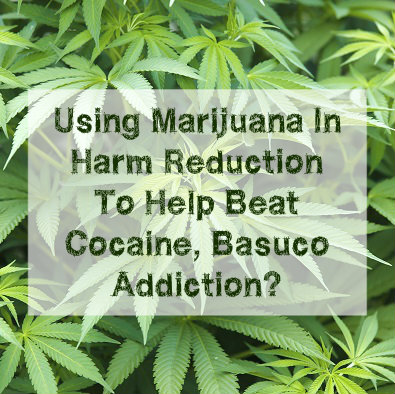 The method of harm reduction is not new. It has been around for decades and begun with the practice of giving heroin addicts a substitute drug called methadone. Other harm reduction programs include handing out clean needles to heroin users and providing a safe place to use. Critics of the technique feel that harm reduction only encourages addicts to keep using. In spite of criticisms, harm reduction continues to be used, not just in the US, but in other countries as well. In Colombia, officials are trying harm reduction treatment with cocaine addicts, and finding success.
The method of harm reduction is not new. It has been around for decades and begun with the practice of giving heroin addicts a substitute drug called methadone. Other harm reduction programs include handing out clean needles to heroin users and providing a safe place to use. Critics of the technique feel that harm reduction only encourages addicts to keep using. In spite of criticisms, harm reduction continues to be used, not just in the US, but in other countries as well. In Colombia, officials are trying harm reduction treatment with cocaine addicts, and finding success.
Colombia – Cocaine Capital Of The World
Colombia is the cocaine capital of the world, producing more of the illegal drug than anywhere else on the planet. Cocaine comes from a plant native to South America called coca. The leaves of this plant naturally contain cocaine, which is a psychoactive stimulant. For many years, the natives of the area have chewed coca leaves for the high, but have also used them for medicinal purposes.
To get the cocaine out of the leaves, drug manufactures must go through a multi-step chemical process and end up with the white powder that is sold in the illegal marketplace. Most of this cocaine comes out of Colombia and is smuggled into the United States. In Colombia and particularly in Bogota, the capital, there is a real problem with addicts who use a base form of cocaine. It is a low-quality, low-purity form of the drug called basuco. It is an intermediate product in the process of making cocaine and it often contains residues of the solvents used, like kerosene. It may also have fillers like crushed bricks or ashes. Basuco is even more addictive than cocaine and is a rising problem in Bogota.
Harm Reduction for Basuco Addicts
Basuco is so addictive and so hard a habit to kick that the public health officials in Colombia have taken action and are using harm reduction. They have created controlled consumption facilities where addicts are given increasingly smaller doses of basuco and given marijuana instead. The idea is to help addicts stop using this very dangerous drug in a controlled manner. Marijuana is used like a substitute. Although it is a drug, it is much safer than basuco.
Addiction experts who espouse a traditional view of treatment believe that addicts must give up a drug completely and refrain from using any other substance. Increasingly, this traditional type of treatment is being proven ineffective. To fill the gap, harm reduction techniques are emerging around the world. The harm reduction programs for basuco addicts in Bogota are already helping people.
Using Marijuana For Harm Reduction
The philosophy of harm reduction, in itself, is controversial. Adding marijuana to the technique adds another level to the debate. To many staunch traditionalists, giving an addict another drug is simply wrong and in opposition to their beliefs about addiction. The facts, however, support this technique. Research investigating the use of marijuana for addicts using prescription painkillers has turned up positive results. The medical marijuana used by these people helped to reduce side effects from the painkillers, helped to manage pain, and helped to reduce the symptoms of withdrawal when the painkillers were taken away.
Other studies also showed evidence that using marijuana could help addicts. One study demonstrated that smoking small amounts of marijuana aided heroin addicts by keeping them in their treatment programs. Another study indicated that cocaine users in rehab who also used marijuana moderately were more successful at quitting than those who never smoked marijuana.
How Harm Reduction Helps
The idea of using drugs to cure addiction may seem radical. Certainly, the philosophy of giving addicts their drugs of choice in a safe environment is not without controversy. As traditional treatments fail to help addicts, however, these other options must be considered. The research and the results are very promising. Harm reduction and the use of marijuana are already helping cocaine addicts, and could help others as well.
Bipolar disorder is a mental illness that causes significant mood swings. It affects as much as two percent of the population and first manifests primarily in the late teens and early 20s. Although the severity and types of mood can vary dramatically among patients, the most common example of bipolar disorder is a cycling between periods of happiness and sadness, often at extreme levels (i.e. euphoria vs. despair). Although counseling can help patients learn how to identify their distinct moods, as well as the things that trigger each mood swing, many patients will also benefit from some sort of medication to help dampen negative symptoms and neutralize moods.
 It is now pretty obvious that people who are taking prescription medications, including bipolar medications, should refrain from drinking alcohol or using recreational drugs as these substances can negatively interfere with the proper functioning of the medication. In some cases, the prescriptions and other substances can negatively interact to the point of overdose or death.
It is now pretty obvious that people who are taking prescription medications, including bipolar medications, should refrain from drinking alcohol or using recreational drugs as these substances can negatively interfere with the proper functioning of the medication. In some cases, the prescriptions and other substances can negatively interact to the point of overdose or death.
The Importance Of Identifying Signs Of Substance Abuse In Bipolar Patients
Unfortunately, due to the nature of the disease, some bipolar patients are unable to refrain from using alcohol or drugs even when they are taking prescription medication for their illness. In fact, roughly half of all patients with some form of bipolar disorder also have a drug or alcohol problem. Thus, when treating a patient who has bipolar disorder, mental health professionals must be vigilant in identifying signs of substance abuse or alcoholism as the two illnesses tend to go hand in hand.
Scientists have yet to discover a definitive explanation for the high incidence of substance abuse among bipolar patients. In fact, the real explanation likely entails a combination of factors. For instance, genetics may play a pivotal role — a family history of substance abuse plus bipolar disorder increases a person’s risk of having both diseases. Further, bipolar disorder can be a tough illness to treat. Although certain medications have been shown to be successful in alleviating certain bipolar symptoms in many patients, there is currently no cure for the disease and no one magic medication that renders all patients symptom free. As such, many patients use drugs and alcohol as a way to escape the symptoms of or fallout from the disease. This phenomenon is known as “self-medicating” and is often found in patients with the more debilitating mental illnesses, including bipolar disorder.
It turns out that doctors must be especially vigilant when it comes to identifying substance abuse in female bipolar patients. Studies show that females suffering from bipolar disorder are several times more likely to abuse alcohol than men with bipolar disorder. Although men with bipolar disorder also have a higher incidence of alcoholism than men without bipolar disorder, the rate is nowhere near as high as with women.
Factors For Bipolar Disorder
While it could certainly be true that bipolar patients have a higher predisposition to addiction than non-patients, both family history and the fact that bipolar patients tend to self-medicate with drugs and alcohol is more likely the culprit behind such a high rate of alcoholism. Researchers at UCLA conducted a study of roughly two hundred and fifty bipolar patients who were being treated at UCLA on an outpatient basis. The results of the survey showed that the males with alcohol problems were more likely to have a history of alcoholism in their families than males without such alcohol problems.
However, female participants with alcohol problems did not report similar rates of family alcohol problems. Instead, these patients reported co-occurring issues with anxiety and depression. Thus, researchers hypothesized that women bipolar patients were more likely to self-medicate than their male counterparts. Unfortunately, research also suggests that women are less likely to seek help for drinking problems than men. This puts female bipolar patients at high risk not only for alcoholism, but for untreated alcoholism.
Read More About Addiction And Mental Health – There Is Hope!
04 Nov 2013
Drug Rehab Treatment For Doctors?
Addiction is a mental health issue that is best treated by a team of professionals, including a psychiatrist who specializes in addiction. This is not the type of disorder that can be adequately addressed by a family doctor or general practitioner and very few active addicts can successfully treat themselves. Drug rehab centers have been set up all over the country to deal with addiction-related disorders.
Certain individuals (especially those who have access to addictive medications, routinely witness other people’s trauma, or have high-stress professions) are incredibly vulnerable to addiction disorders and may require even more specialized addiction treatment than members of the general population.
Doctors Reluctant To Enter Treatment
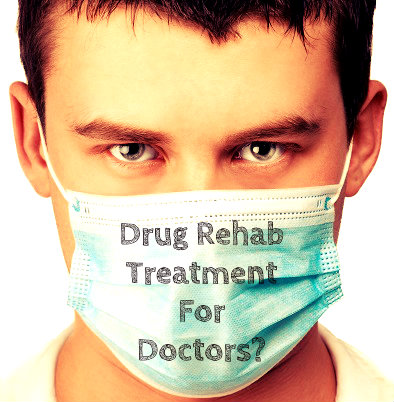 One such subset are physicians who have become addicted to drugs or alcohol and need to enter a drug rehab facility to recover, either voluntarily or at the request of an employer or licensing body. However, since the mere disclosure of the existence of the disorder can mean the end of a doctor’s career, physicians are often reluctant to participate in mainstream addiction treatment programs where anonymity is not assured and significant periods of time off work is required.
One such subset are physicians who have become addicted to drugs or alcohol and need to enter a drug rehab facility to recover, either voluntarily or at the request of an employer or licensing body. However, since the mere disclosure of the existence of the disorder can mean the end of a doctor’s career, physicians are often reluctant to participate in mainstream addiction treatment programs where anonymity is not assured and significant periods of time off work is required.
However, when addressing the fact that disclosing an addiction problem can threaten a physician’s professional career and reputation, one must weigh the potential fallout against the potential harm suffered by a patient who is being treated by someone under the influence, in withdrawal or just hung over. Keeping in mind the doctor’s oath to “first, do no harm”, the necessity to seek professional treatment for a drug or alcohol problem is obvious. Professional treatment programs can help physicians get the help they need while minimizing damage to ongoing careers.
Specialized healthcare for doctors as patients is not a new concept. Over the past few decades, states have sponsored their own physician health programs with the goal of encouraging doctors to seek treatment for issues that, in the absence of assured privacy, they would tend to keep hidden. Addiction has been, and continues to be, one such disorder, where the professional stigma attached to entering drug rehab can follow a doctor even after recovery.
Physician Addiction Treatment Steps
The hallmark of any good physician health program will be an addiction treatment plan completely individualized to meet each doctor’s treatment goals in a way that best assures confidentiality and minimizes career disruption. During the initial evaluation, intake professionals at the physician health program will evaluate not only the level of drug or alcohol addiction, but also screen for co-occurring addictive behaviors and other mental health disorders.
There will often be a team of highly qualified addiction professionals working together to help the physician achieve lasting sobriety and, in some cases, may communicate with professional monitoring agencies when treatment has been mandated by a licensing body.
Support For Family And Staying Sober
In addition, support for partners, spouses, and children will be offered through specialized family programs. After initial recovery, the physician treatment center may offer continuing care to help the doctor maintain sobriety even after he returns to his job. This is especially important when the presence of triggers, such as medications, stress and patient trauma, will continue to be an everyday occurrence.
The most important aspect of physician treatment programs, however, is that they work. When matched with an appropriate drug rehab, doctors can get and stay sober even when their careers require them to be in the presence of powerful triggers on a daily basis. Recent research surrounding professional addiction treatment for doctors shows that this specialized type of care can dramatically reduce the rate of relapse after initial sobriety (as low as 3%) and help save careers. In fact, over 95% of participants in physician health programs successfully return to work. In comparison, the US population suffers a staggering 50% relapse rate.
News accounts of the party drug known as “molly” seem to have been replaced recently with reports of a much more frightening drug called krokodil. Health officials are now concerned that the synthetic drug, which is said to deliver a heroin-like high, has made its way into the United States. Physicians in Utah, Arizona, and, most recently, Illinois, have reported possible cases of krokodil use, putting drug addiction and health experts on alert.
Krokodil Facts
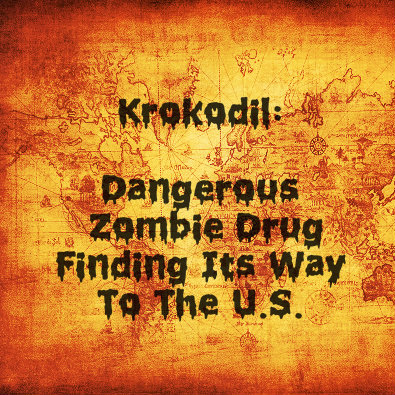 Krokodil is a homemade version of a drug called desomorphine, which was developed in the 1930s as a morphine alternative. However, researchers found that it was up to 10 times stronger than morphine, so its use was discontinued. Illicit drug users now re-create desomorphine by using a base made from codeine, a narcotic used to relieve pain and suppress coughs.
Krokodil is a homemade version of a drug called desomorphine, which was developed in the 1930s as a morphine alternative. However, researchers found that it was up to 10 times stronger than morphine, so its use was discontinued. Illicit drug users now re-create desomorphine by using a base made from codeine, a narcotic used to relieve pain and suppress coughs.
The drug, which Time has called a “dirty cousin of morphine,” also contains a dangerous mix of alcohol, paint thinner, gasoline and lighter fluid. The mixture includes red phosphorus as well, a substance used in the striking pads of matchboxes. Iodine is another ingredient — one that often leaves addicts enveloped in a tell-tale heavy iodine odor that, as one Russian physician noted, can’t be washed out of clothing.
Krokodil can be easily concocted at home in about 30 minutes. Users inject krokodil wherever they find available veins on their body, from their head to their feet. Injecting the drug delivers a high quickly — in as little as five minutes. This is in contrast to the one to two hours it can take to get high from drugs in pill or capsule form.
This dangerous substance delivers a more potent high than heroin. However, the euphoric feeling doesn’t last as long, at anywhere from 90 minutes to two hours. Addiction occurs quickly, catapulting users into a never-ending cycle that moves from cooking the drug to getting high to cooking the next batch. Users interviewed for news accounts have reported going for days without sleep as they binged on krokodil.
Krokodil Effects
Anyone who has seen the sensational-sounding online headlines about this drug addiction may have written them off as attempts by websites to generate traffic: “Zombie apocalypse drug reaches U.S.” or “Krokodil –The drug that eats junkies.” However, headlines like these are not exaggerations. The drug gets its name from its effect on the skin and underlying tissue. It’s believed the damage is caused not by the psychoactive ingredient desomorphine, but rather the caustic substances used in the concoction. These chemicals destroy blood vessels and tissue. Unsanitary drug cooking and injection practices also likely play a role in the destruction.
After krokodil is injected, blood vessels burst and tissue surrounding the injection site dies. As a result, the skin takes on a greenish, scaly appearance that mimics that of a crocodile, or krokodil in Russian. The process leads to open, festering wounds and infections as the skin rots from the inside out, eventually causing gangrene. Those with an addiction to krokodil can be left with dead skin that peels away to reveal tissue and bone underneath. Many users experience blood poisoning. The damage addicts suffer typically requires intensive wound care or skin grafts. Amputations are common.
Over time, the drug’s acidity also dissolves porous bone, especially in the jawbone and teeth. The effect has been compared to “meth mouth,” which is the unsightly rotting of the gums and teeth often seen in methamphetamine addicts. Chronic krokodil abusers frequently lose their teeth.
The average life expectancy of a krokodil addict is estimated to be very short at only two to three years. However, even those who are able to overcome the addiction are left with lasting and devastating physical effects. Krokodil causes brain damage in chronic users, leaving them with speech impediments and impaired motor skills, often in the form of jerky movements. In fact, the disjointed movements combined with addicts’ skin and tissue injuries have caused some to deem krokodil the “zombie” drug.
Krokodil In The U.S.
According to a report published in the Journal of Addictive Diseases, this homemade drug is believed to have first been used in Russia in 2003. For years, its use was confined largely to Russia and the surrounding countries that had been part of the Soviet Union. Experts estimate about 100,000 Russians have become addicted to krokodil and other illicit homemade drugs. By 2011, krokodil began moving into Germany and Norway. The ingredients are widely available, and users freely circulate recipes that make it easy to create batches on a home stove. It also costs a fraction of what users pay for heroin.
Currently, the U.S. incidents are being classified as possible cases; although the physical symptoms appear to be consistent with krokodil use, drug addiction experts have not been able to obtain samples of the drug, nor have they been able to get blood or urine samples that might confirm its use. Obtaining positive samples from addicts may be challenging because the body metabolizes the drug so quickly.
Krokodil Treatment
Because of the very serious side effects, treatment must start as soon as possible. Treating this addiction is a complex process, requiring a joint effort by physicians and addiction professionals. The obvious physical symptoms may require emergency care, making hospitalization necessary. As medical staff members try to stem the physical damage, a skilled addictions team will need to address the severe withdrawal symptoms.
Although the drug mimics the euphoric high of heroin, there are differences regarding withdrawal. Heroin’s physical withdrawal symptoms last about a week, while krokodil’s can draw out for as long as a month. Russian addiction experts say it causes such intense pain that it’s common to tranquilize patients during withdrawal. Addicts also experience seizures, fever, and vomiting.
Following withdrawal, a drug rehab team will start the addict on an intensive therapy program. Treatment will likely include extended inpatient rehab along with individual and group therapy. Long-term aftercare, including sober living, may also be part of the recovery plan. In addition, an addict might need physical or occupational therapy to address the physical aftermath of this addiction.
Krokodil addiction must be treated immediately by professional addiction treatment specialists. If you or someone you love is using this extremely dangerous substance, don’t wait to get help. Contact a drug addiction recovery center today.
Read More Russia’s Deadly Krokodil


